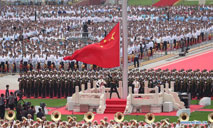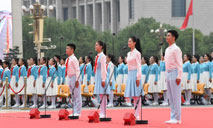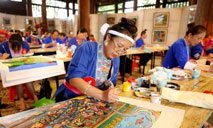Hundreds of unmarked graves unveil tip of Canada's genocidal history
-- The Cowessess First Nation, an indigenous group in Saskatchewan, on Thursday announced a preliminary discovery of 751 unmarked graves near a former indigenous residential school, less than a month after a similar discovery rocked the country and the world.
-- Survivors of Canada's indigenous residential schools said the two findings were just the tip of the iceberg, renewing their feelings of grief and trauma.
--An estimated 150,000 indigenous children across Canada were reportedly removed from their homes and forced to attend residential schools between the 1890s and as recently as 1996, during which more than 50,000 died of abuses.
OTTAWA, June 26 (Xinhua) -- Though touting itself a "model for human rights," Canada was confronting its ugly history of encroaching upon the human rights of the indigenous people, as hundreds of unmarked graves were discovered at former indigenous residential schools.
Less than a month after the discovery of the remains of 215 indigenous children at a former residential school in western Canada, both Canada and the international community were again shocked by the new discovery of 751 more unmarked graves at a cemetery near another former indigenous residential school in the Canadian province of Saskatchewan.
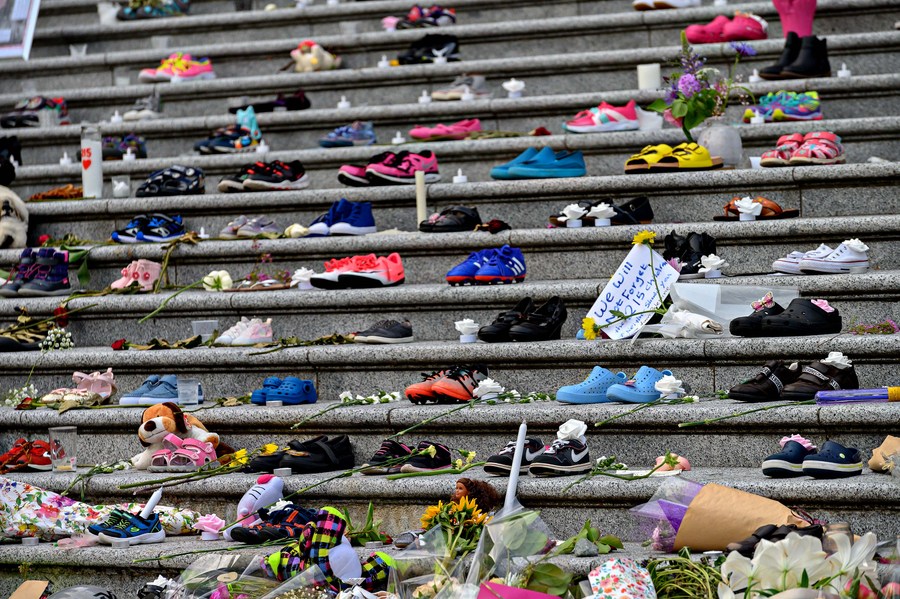
Children's shoes and toys are placed on the staircase outside Vancouver Art Gallery during a memorial event for the 215 children whose remains have been found buried at a former Kamloops residential school, in Vancouver, British Columbia, Canada, May 30, 2021. (Photo by Andrew Soong/Xinhua)
SHAMEFUL CHAPTER REVEALED
The Cowessess First Nation, an indigenous group in Saskatchewan, on Thursday announced a preliminary discovery of 751 unmarked graves near a former indigenous residential school, less than a month after a similar discovery rocked the country and the world.
The Cowessess First Nation started a ground-penetrating radar search on June 2, according to local media reports, days after the discovery of the remains of 215 indigenous children buried in unmarked graves near the Kamloops Indian Residential School in British Columbia.
Speaking at a press conference on Thursday, Cowessess First Nation Chief Cadmus Delorme said that technical teams scanned around 44,000 square meters of area, with preliminary findings reporting 751 "recorded hits" at the site.
Survivors of Canada's indigenous residential schools said the two findings were just the tip of the iceberg, renewing their feelings of grief and trauma.
In a statement issued after the new finding of unmarked graves, Canadian Prime Minister Justin Trudeau called the latest discoveries "a shameful reminder of the systemic racism, discrimination, and injustice that Indigenous peoples have faced and continue to face in this country."
An estimated 150,000 indigenous children across Canada were reportedly removed from their homes and forced to attend residential schools between the 1890s and as recently as 1996, during which more than 50,000 died of abuses.

People participate in a gathering organized by local indigenous community to pay tribute to the 215 Indigenous children whose bodies were found in a mass grave at a former Kamloops residential school, at Grandview Park in Vancouver, Canada, June 2, 2021. (Photo by Liang Sen/Xinhua)
In 2008, the Canadian government formally admitted its role in forcing those native children into government-financed residential schools where many suffered physical and sexual abuse.
For Nola Jeffrey, who heads a healing center for indigenous people in British Columbia, the term "residential schools" was misleading and designed to sanitize the atrocities that took place there.
"I don't like calling them schools," Jeffrey told CTV News. "Schools are a place where ... you are nurtured and you are held so that your gifts can come out, and those places were not that at all. They were like, I guess, concentration camps would be the best word I could use to explain them."
CULTURAL GENOCIDE COMMITTED
In 2008, the Canadian government allowed the establishment of the Truth and Reconciliation Commission (TRC) of Canada to investigate forced assimilation practices committed across Canada's indigenous residential schools.
The TRC officially concluded the investigation in December 2015 with a report that said the school system amounted to "cultural genocide."
"These measures were part of a coherent policy to eliminate Aboriginal people as a distinct people and to assimilate them into the Canadian mainstream against their will," said the TRC report. "Residential schooling quickly become a central element in the federal government's Aboriginal policy."
"The intent of the government's policy ... was to assimilate Aboriginal people into broader Canadian society," said the report. "At the end of this process, Aboriginal people were expected to have ceased to exist as a distinct people with their own governments, cultures and identities."
In 1985, Edwin Kimelman, a judge of the Canadian Provincial Court of Manitoba, also stated in a report on indigenous peoples and child welfare policies that "cultural genocide has been taking place in a systematic, routine manner."
Speaking early this month after the remains of 215 indigenous children were found in British Columbia, Canada's National Chief of the Assembly of First Nations Perry Bellegarde said, "Now nobody can deny that the residential schools were a genocide of our people."
In his statement on Thursday, Trudeau admitted that "no child should have ever been taken away from their families and communities, and robbed of their language, culture, and identity."
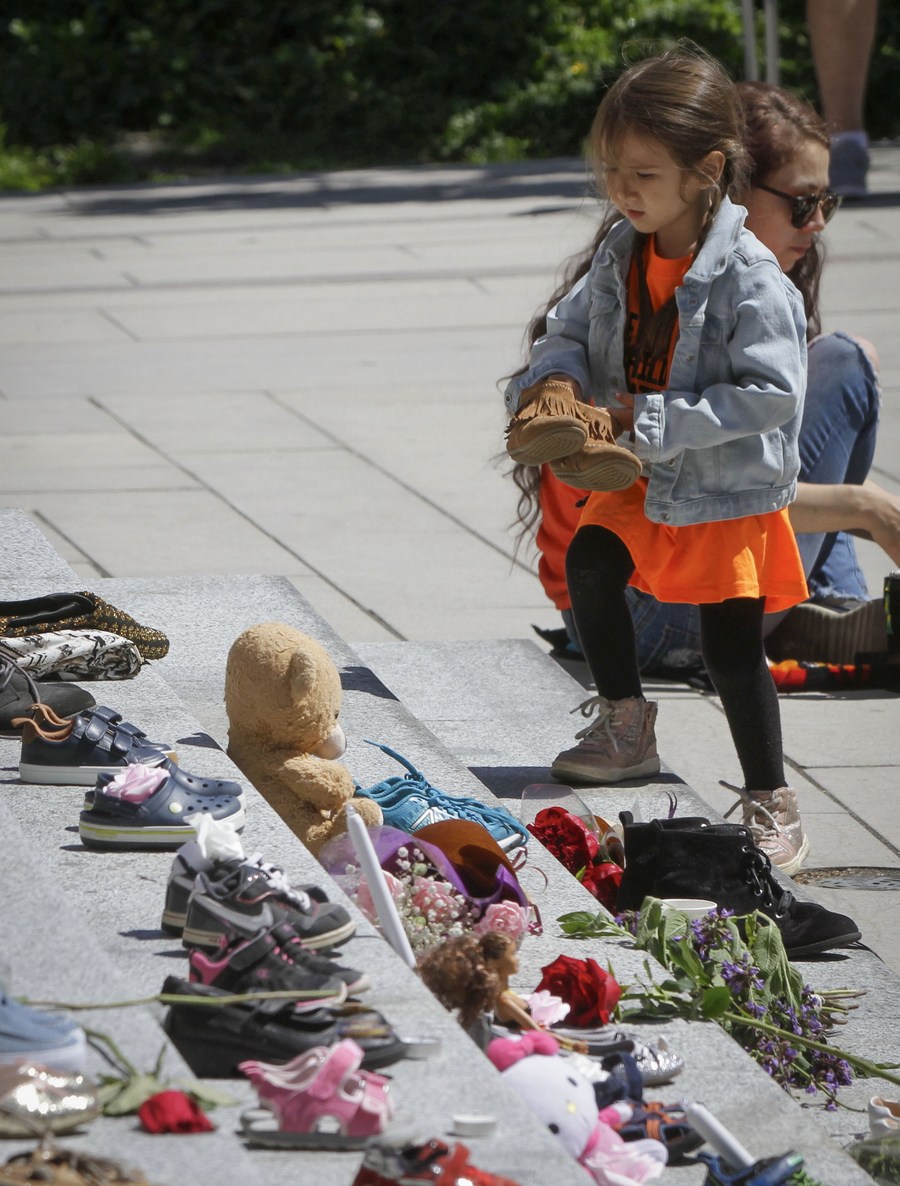
A girl tries to put a pair of shoes on the staircase while attending a memorial event for the 215 children whose remains have been found buried at a former Kamloops residential school, in Vancouver, British Columbia, Canada, May 29, 2021. (Photo by Liang Sen/Xinhua)
Retired Canadian Senator Murray Sinclair, the former chair of the TRC, was among those calling for an independent investigation to examine all burial sites near former residential schools.
He told the Canadian parliament early this month that such investigation should not be run by the Canadian federal government.
PAST NIGHTMARES RECOUNTED
As the scandals of those indigenous residential schools became exposed, more and more survivors began to speak out publicly for the first time.
According to Jeffrey, her healing center in British Columbia got many calls directly from survivors who are now willing to tell their miserable school life.
"A lot of it is because they were (previously) brainwashed to believe that no one would believe what they were saying," said Jeffrey.
Florence Sparvier, a survivor of the Marieval Indian Residential School, said at a press conference on Thursday that she had to go to the school because one of her parents would have been jailed if they did not send a child to the school.

Indigenous Canadians take part in a memorial event for the 215 children whose remains have been found buried at a former Kamloops residential school, in Toronto, Canada, May 30, 2021. (Photo by Zou Zheng/Xinhua)
While in the school, "they made us think different. They made us feel different. A lot of pain we see in our people comes from there," Sparvier told reporters.
"They made us believe we didn't have souls," she added, recounting the harsh treatments indigenous children were subjected to at the school.
"They pounded it into us and really they were very mean when I say pounding, I mean pounding. Those nuns were very mean to us. I don't know, I don't think they liked it being there either," she said.
Although she attended the Marievel residential school 56 years ago, Debbie Delorme, another survivor, told local media that the pain and trauma she endured there still haunts her today.
Delorme was taken when she was five years old, and she said that all of her immediate family were forced to attend Marievel and suffered multiple forms of abuse there.
"I was also sexually, physically, and mentally abused," Delorme said. "Any abuse that anybody talks about was all true."
As a survivor of St. Anne's Residential School in northern Ontario, Elizabeth Sackaney said the latest discoveries of unmarked graves at former indigenous residential schools were just the beginning.
"A lot of kids went missing, a lot of kids something happened to them," said Sackaney.
Photos
Related Stories
- Buried deep: Canada’s inhumane acts against Indigenous children
- 751 unmarked graves found near former indigenous residential school in Canada
- Chinese diplomat urges Canada to stop human rights violations against indigenous people
- Canada’s attempt to lead anti-China joint statement on Xinjiang doomed to fail: Chinese Mission Spokesperson
- Canada's daily COVID-19 cases continue decreasing
Copyright © 2021 People's Daily Online. All Rights Reserved.







